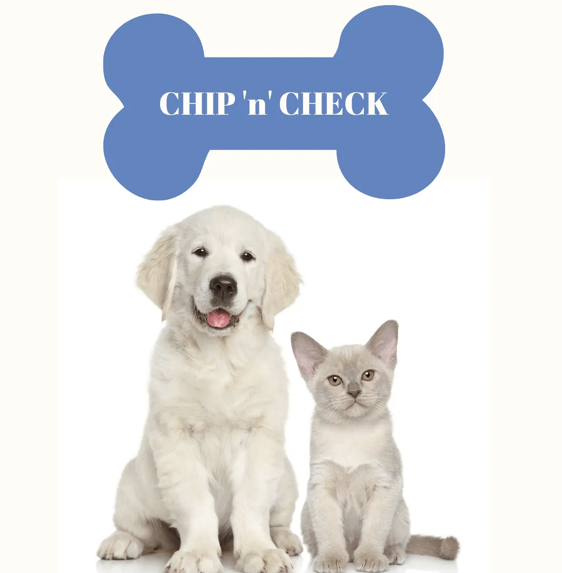Microchipping

Microchipping your dog or cat gives them the best chance of being reunited with you should they become lost or stolen.
Although no one likes to think of their pets getting lost or stolen, unfortunately it does happen, as each and every year some 250,000 pets go missing.
Microchipping is a permanent solution that greatly increases the chances that a lost pet will be reunited safely with their owner. If a pet is stolen and recovered by authorities, a microchip might also provide the only means to identify and contact the owner.
How does microchipping work?
A microchip is a small device about the size of a grain of rice, it is inserted under your pets skin, between their shoulder blades, via a quick injection. Once inserted, pet cannot feel the microchip and the special capsule around it means that it does not break down and is designed to last your pet’s lifetime.
The microchip is coded with a unique number that can be read by a scanner. Microchips do not store personal data – this is kept against the unique identification number on a secure database. If your pet is found and scanned, the microchip database is accessed online and the organisation that has your pet, for example the veterinary surgery, a rescue centre or the police, can use the number to find your details. You can then be contacted and your pet safely reunited with you.
However microchipping is only effective if you keep your details upto date. If you move house or change telephone number you mist make sure that you tell the database you are registered with so they have your up-to-date contact details.
Dog Microchipping
It is a legal requirements under section 12 of the Animal Welfare Act 2006 that all dogs over the age of 8 weeks of age are microchipped, registered on an approved database and for owners details to be kept upto date in England and Wales.
Cat microchipping
The Government is to introduce compulsory cat microchipping to help reunite lost and stray pets, it will be a legal requirement for cats to be chipped by the age of 20 weeks.

